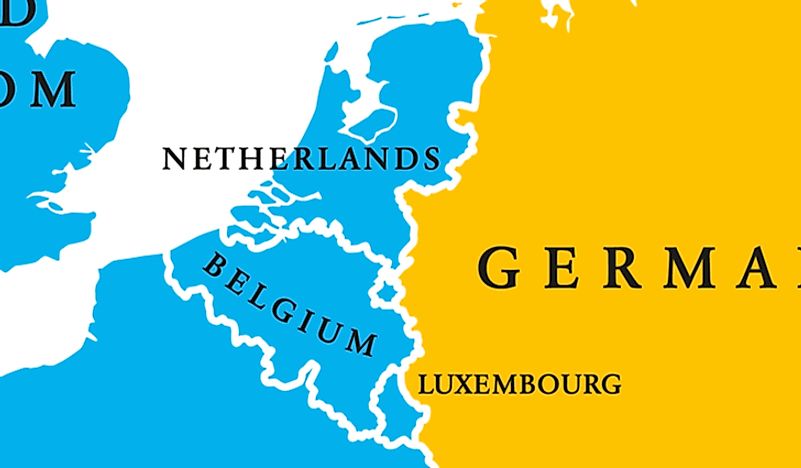Where Are The Low Countries?

The Low Countries is a term often used to refer to the Western European nations of Belgium, the Netherlands, and Luxembourg collectively. They are also called the "Benelux" countries, a word composed by combining the first letters of their names. They are bordered by Germany to the east and France to the south. They are known as the Low Countries because much of their land along the coast of the North Sea and parts of their island are either below the sea level or slightly above. In the case of the Netherlands, more than a quarter of the land is below the sea level.
History
The area known as the Low Countries was once part of the Roman Empire's frontier provinces and was inhabited by Belgic and Germanic tribes. Frankish tribes first entered the region in the 5th Century. The Frankish ruled the area in the 9th Century, and it became a Frankish empire. In 1477 the area fell within the rule of the duchy Empire and became known as the Burgundian Netherlands or the seventeen provinces. The region united between 1815 and 1839 to form the united kingdom of Netherlands but later disintegrated into the current Netherlands, Belgium, and Luxembourg. It adopted the name Benelux for trading among the states after the Second World War
Linguistics
Ethnically, the Low Countries are a transitional zone between Germanic and Latin heritage lines of Western Europe. The Dutch-speaking people occupy the Netherlands, the Flemish (Dutch) occupies the northern parts of Belgium and the French occupy southern Belgium. Luxembourg is home to the Letzeburgesch people, who also speak a dialect of the Germanic language.
Culture
Towards the end of 15th Century, the Italian Renaissance increasingly came to influence the culture of the Low Countries. They acquired the painting and sculpture works of the Italians through frequent trades and interactions with Italy. The region has also for centuries been predominately Christian, owing to the early reign of the Flanders and the Roman Empires that promoted the faith. Their shared history makes Dutch a common language in both Netherlands and Belgium making them set up the Dutch language union to encourage cooperation in Dutch language and literature. The Union is a major contributor of literature materials in their education systems and also works to showcase their cultural heritage. In 1997, they signed an agreement on cultural, educational, scientific, and social exchanges.
Economic Relations
These countries have a long history of close economic connections because they share many aspects of common languages, cultures, and proximate geographical positions. After the Second World War, they united to form the Benelux economic union that enables secure trading among them. They are also members of the European Union (EU) and the North Atlantic Treaty Organization (NATO). The Netherlands is the major trading partner for Belgium and it also offers the biggest market for Belgium goods and services after Germany. The Netherlands is also the primary exporter to Belgium.
Diplomatic and Economic Relationships Among the Low Countries
These countries continue to maintain close geopolitical relations. In addition to seeing each other at EU and NATO summits, these countries' heads of states meet with one another frequently. These relations not only occur through federal states but also separately at the regional levels of Flanders, Wallonia, and Brussels. In 2008, they revised the Benelux Treaty, which enables closer collaborations in areas of the economy, security, and sustainability. Together they formed many bilateral agreements with each other that allow an even greater cohesion between and among the countries.







